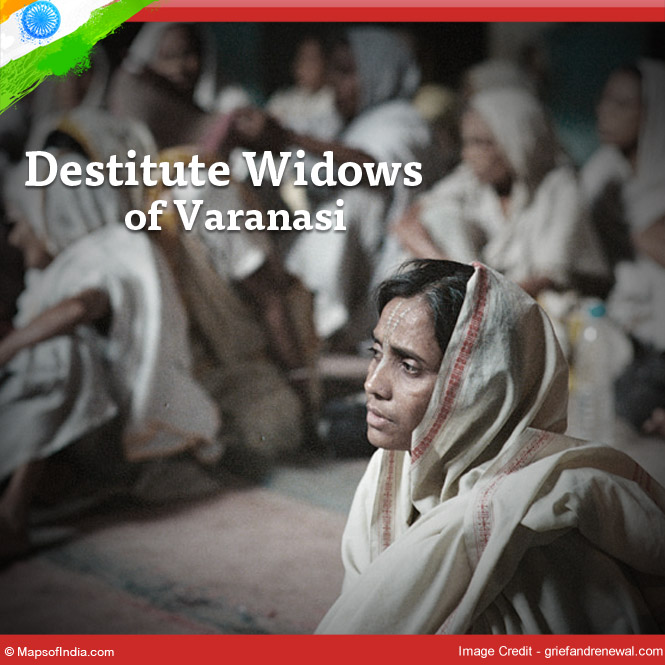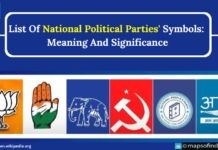Varanasi has now come to the forefront, thanks to Narendra Modi. India had forgotten Varanasi, as much as it has forgotten one of the most tragic outcomes of a social evils that was once practiced in Renaissance Bengal: the banished widows of Benares (as Varanasi was known earlier).
The roots of the tragedy go back to a period in Bengal when it was leading India in social change. Bengal was transforming itself in all areas of culture, knowledge, social reform and progressive thought, but there was one growing problem and that was the existence of the young widows in society. The male dominated society was not about to lose its control over inheritance of property and the presence of the young widows within the family raised questions of control.
For society in general, the presence of a young widow posed several problems. The exploitative eyes of the men in house and those in the neighbourhood were causing much concern to both the male and female members of the house. As with every social evil practiced in India, over time, there was always a religious justification given and explained away as having come from God himself. That was the excuse given by the custodians of religious practice, with tacit support of vested interests of the upper classes that controlled the society.
The young widow was told that once the husband died, it was her moral and religious duty to renounce the material world, and her existence, henceforth, would be frugal. She was asked to cut her hair short, not use make-up in any way and had to dress in a white saree only, all to ensure that she was no more an object of desire in the eyes of a male.
But in Bengal of the time, this wasn’t enough. They wanted her out of society and Bengal itself, so she was told that she had a religious obligation and her life would not be complete unless she relocated to one of the most revered religious centers and spent the rest of her life in the quest of finding God. They were told that their journey would help them purify their souls of sins committed in the past and that their entry into the portals of heaven would be made much easier. The widows were illiterate, ignorant and gullible but had little choice, with the entire society, men and women, up against them.
In other words, she was banished forever to a land she did know, a language she did not speak, food she was not familiar with, to live a life amongst strangers where she had to fend for herself.
No, the wealthy male members of Renaissance Bengal during the 18th and 19th century, were not that uncaring. They did build some temples in places like Kashi and Vrindavan and also financed construction of some ashrams to house the widows. In fact, some widows from wealthy families were well taken care of, at least initially. In the early days of their arrival, there was a small amount that was sent to support the widows from their families but that was to soon dry up and subsequently these widows had to fend for themselves to survive.
With time, as India moved towards independence, Bengal washed its hands off these poor widows. The local society did not care much, as it had enough problems of its own and the destitute widows of Bengal tried to stay alive being nobody’s baby, waiting for death, their final salvation. That situation exists even today and they can be seen begging for food in the streets of Varanasi and Vrindavan. Their day is spent praying, singing bhajans in various temples, where they live off food and money donated by pilgrims. Not all are lucky in any given day.
Deepa Mehta’s 2005 film Water gave a sensitive portrayal of the widows with the story set in Varanasi of 1938.
What started off as widows from Bengal, now has widows from various north and central states of India. These are helpless women who have been abandoned by their families after the death of their husbands, and very often their own children have thrown them out. The excuses to abandon them have changed with time but the evil remains very much amidst a ‘resurgent’ India trying to make its mark in the 21st century.
It’s not that that the city has not done anything at all. There are several ashrams that have tried to help but with minimal governmental support or intervention, supporting the widows has been an uphill task. In the year 2012, a publication broke a story of inhuman disposal of the bodies of widows living in government shelters in Varanasi.
Successive state governments have consistently ignored the plight of these widows that do not represent a vote bank for politicians and it has taken the Supreme Court to intervene and instruct the state government to step up support of medical aid and material support for the widows. Charitable organisations and civil societies have been struggling to raise financial support for the widows. The government offers a paltry Rs. 50 per month for medical help, which is grossly inadequate.
For a developing country like India, raising resources to set up a fund to support such widows in cities like Varanasi and Vrindavan should not be a major challenge. The problem lies with the fact that we have an uncaring society and an uncaring government, and nobody wants to take up the initiative or responsibility to step in. The local administration is over-stressed handling various other issues, with very little resources at its command, and it’s left to the initiative of NGOs and other private institutions to do whatever they can.
Institutions like Sulabh International have stepped in with some good work and are trying to cope up with the challenge but that is not enough. The state government cannot abdicate its responsibility and must give due priority to this segment of society that has suffered for centuries. It’s time for the entire society to stand up and lend a hand.
So while the city of Varanasi, much ignored by the nation so far, comes under the spot light, will Narendra Modi rise up to the occasion and address the issue? It still is his constituency, isn’t it?




